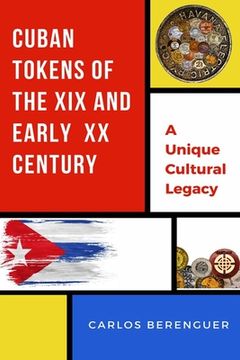Cuban Tokens of the XIX and Early XX Centuries: (B&W) A Unique Cultural Legacy (in English)
Synopsis "Cuban Tokens of the XIX and Early XX Centuries: (B&W) A Unique Cultural Legacy (in English)"
During the Spanish rule in the Island of Cuba, called in those times "The always faithful Island of Cuba", payments, whether for commercial transactions, consumption of products, services or simply for honoring one or the Real means of silver, that honored its denomination, depending on its specific material value, since in general they were made with precious metals, gold, silver, etc.The cost of making these coins was high and the precious materials that were needed were scarce, it was for this reason that coins were made with lower value materials such as bronze, copper, aluminum, nickel or brass for denominations of less denomination. Some owners of sugar mills, settlers, merchants, etc. They decided to coin their own coins, establishing in their environments a viable way to pay and be paid. Really, as far asIt is known, there were few who issued their own coins, those tokens or tokens, which, although today they have become a numismatic curiosity, in their time they served as fiat currency and mode of exchange, today they are truly rare and difficult pieces of find. By achieving the fractionation of the securities, the payment and exchange system improved, to those low value currenciesI knew them as calderilla. Without a doubt, the chips or tokens of the sugar industryCuban women are the most important line in this story.This system was generalized and exceeded the limits of the Sugar Centrals, Tokens were issued in harvesters, product collection, stores, transport, as prizes and incentives or simply as propaganda, which varied from a daily wage, half a journal, a matul of collected tobacco, a drink in a canteen, a passage in a carriage or a steamboat or a simple entrance to an event, etc. itsvalue was always local, only in some exceptions were they redeemable in legitimate current currency, although it is known that they were cause for speculation, offeringSometimes the change with discounts and taking advantage of needs to obtain them at a price lower than their real value. In one way or another this type of fiat currency circulated in Cuba in multiple variants until the government of Major General José Miguel Gómez asked to legislate on the prohibition of suchmethod, it was entered the decade of the 30 that its use was declared illegal in the Island. Nevertheless, its prohibition some of them continued in circulation for many years, sometimes without name, only some die cut that identified them by the owners, without allowing Be detected by the authorities.

